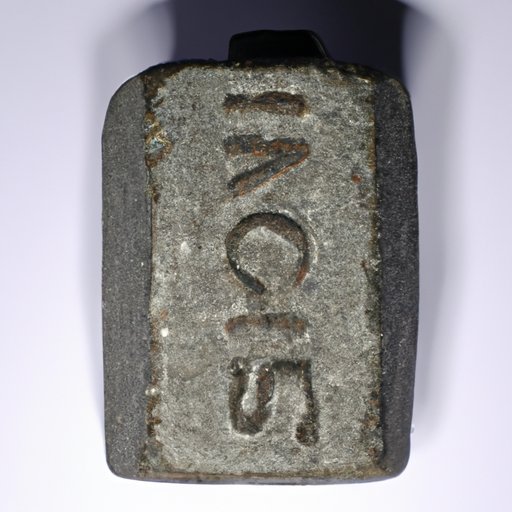
Introduction
Have you ever heard someone say that something weighs a certain number of stones? While this may sound unfamiliar to those who grew up measuring objects in pounds or kilograms, the stone has been a unit of weight measurement for centuries in different cultures and countries. In this article, we’ll explore the history of the stone as a unit of weight, its physical properties, and its relevance in modern times.
History of the stone as a unit of weight measurement
Before modern measuring systems, people used a variety of objects to measure weight, including stones. In ancient times, stones were often used as a unit of weight measurement due to their prevalence and relative consistency in size and weight. Different civilizations had different standards for what constituted a “stone,” but in general, it was roughly equivalent to the weight of a heavy fruit or a typical rock.
As different cultures interacted and traded with each other, it became necessary to standardize weights and measurements. This led to the creation of various systems of measurement, such as the Greek system, the Roman system, and the troy system. In England, the stone was officially standardized in the 14th century as 14 pounds, and it remained in use as a unit of weight measurement until the 20th century.
Today, the stone is still used as a unit of weight measurement in some parts of the world, especially in the United Kingdom and Ireland. However, it has largely been replaced by the pound or kilogram in most other countries.
Physical properties of a stone
A stone is a solid, naturally occurring substance that can vary in size, shape, and composition. Most stones are made up of minerals such as quartz, feldspar, and mica. The weight of a stone can vary greatly depending on its size and composition, but as a general rule, a stone weighs around 14 pounds.
Historically, stones have been used as weights for balancing scales or measuring commodities such as grains or produce. Their size and weight made them a relatively simple and easy-to-use unit of measurement.
Comparing stones to other units of weight measurement
Today, there are several units of weight measurement commonly used around the world, including pounds, kilograms, grams, and ounces. Converting between these units can be confusing, but it’s important to understand how they relate to each other.
One stone is equivalent to 14 pounds, or 6.35 kilograms. To convert pounds to stones, simply divide the weight in pounds by 14. To convert stones to pounds, multiply the weight in stones by 14. To convert stones to kilograms, multiply the weight in stones by 6.35.
Measuring the weight of a stone
Measuring the weight of a stone is fairly simple – all you need is a scale or balance. You can measure the weight of objects in stones by placing them on the scale and adjusting the balance until it evens out. Some common objects that can be weighed in stones include fruits, vegetables, and other commodities.
Stone as a unit of weight measurement in industries
While stones are no longer commonly used as a unit of weight measurement in everyday life, they still have relevance in certain industries. For example, in agriculture, stones can be used to measure the weight of crops such as potatoes or carrots. In construction, stones can be used to measure the weight of building materials such as bricks or concrete blocks. Because stones are a consistent unit of measurement, they can help ensure accuracy and consistency in these industries.
Pros and cons of using different units of weight measurement
While the stone has historically been an important unit of weight measurement, it has largely been replaced by other systems in modern times. There are advantages and disadvantages to using different units of weight measurement, and confusion can arise when multiple systems are used simultaneously. For example, if someone is used to measuring weight in pounds and then switches to kilograms, they may struggle to understand how much something actually weighs. However, using a standard system of measurement can help ensure accuracy and consistency in commerce and industry.
Conclusion
The stone has a fascinating history as a unit of weight measurement, and while it may not be used as frequently today, it still has relevance in certain industries. Understanding how different units of weight measurement relate to each other can be helpful in everyday life and in commerce.




